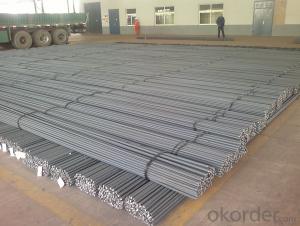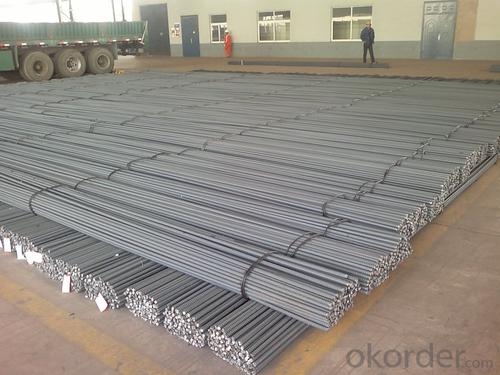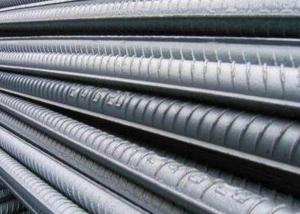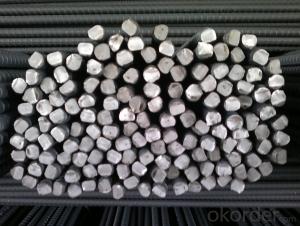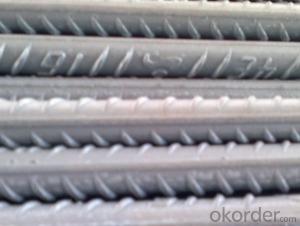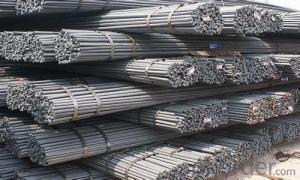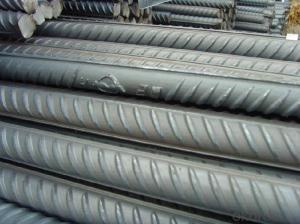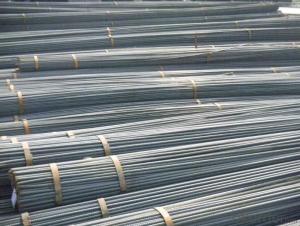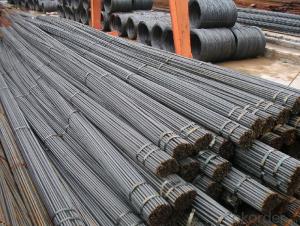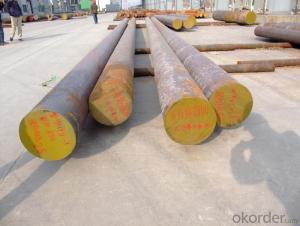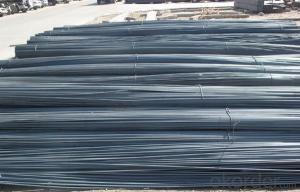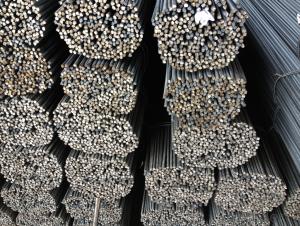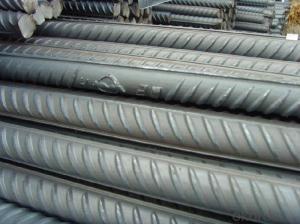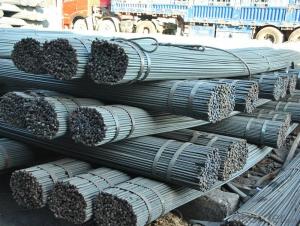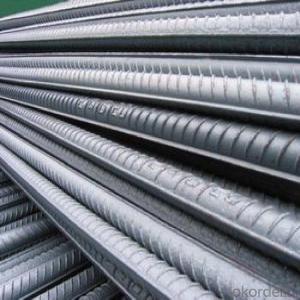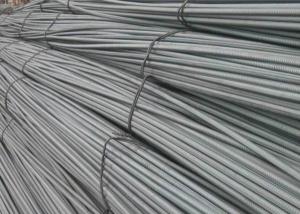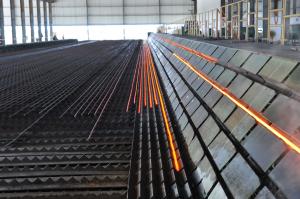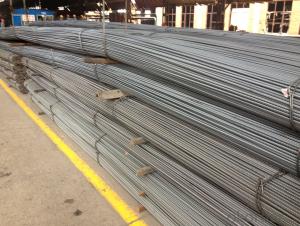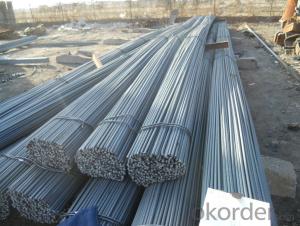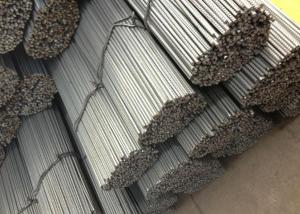Steel Rebar, Deformed Steel Bar, Iron Rods for Construction or Concrete
- Loading Port:
- Tianjin
- Payment Terms:
- TT OR LC
- Min Order Qty:
- 24 m.t.
- Supply Capability:
- 23000 m.t./month
OKorder Service Pledge
OKorder Financial Service
You Might Also Like
REINFORCING DEFORMED STEEL BAR
ACORDING TO ASTM/BS/FEE/ EXTC....
LENGTH:ANY LENGTH
PLEASE SEND US YOUR REQUEST WITH FULL DETAILS FOR BEST OFFER
REINFORCING DEFORMED STEEL BAR
ACORDING TO ASTM/BS/FEE/ EXTC....
LENGTH:ANY LENGTH
Specifications
Certificates: CE & ISO9001:2000
Material: hrhrb400 ,hrb500, BS4449, ASTM A615, SD400
length:6-12
Size: 6mm-40mm
HRB 400E Hot rolled steel rebar
Type | steel rebar |
Standard Grade | a. GB1499.2-2007, HRB335, HRB400E, etc. |
b. ASTM A615 Gr.40, Gr.60, etc. | |
c. BS4449/1997, etc. | |
Diameter | 6mm-32mm etc. |
Length | 6m, 8m, 9m,12m as standard |
Application | construction industry with all types of reinforced concrete structures and so on |
Packing | standard export packing, or as per customers' requirement |
Quality | First quality |
Delivery time | Right now after the deposit. |
Others | 1. all the production process are made under the ISO 9001:2001 strictly |
2. our products conform to all the standards | |
3. we can offer special specification products as per our customers |
We are willing to establish long business relations with customers all over the world. Any comments and requirement will be appreciated. It is our big pleasure of serving you.
If you are interested in our products, please contact us for more information we can supply you with competitive price and good service.
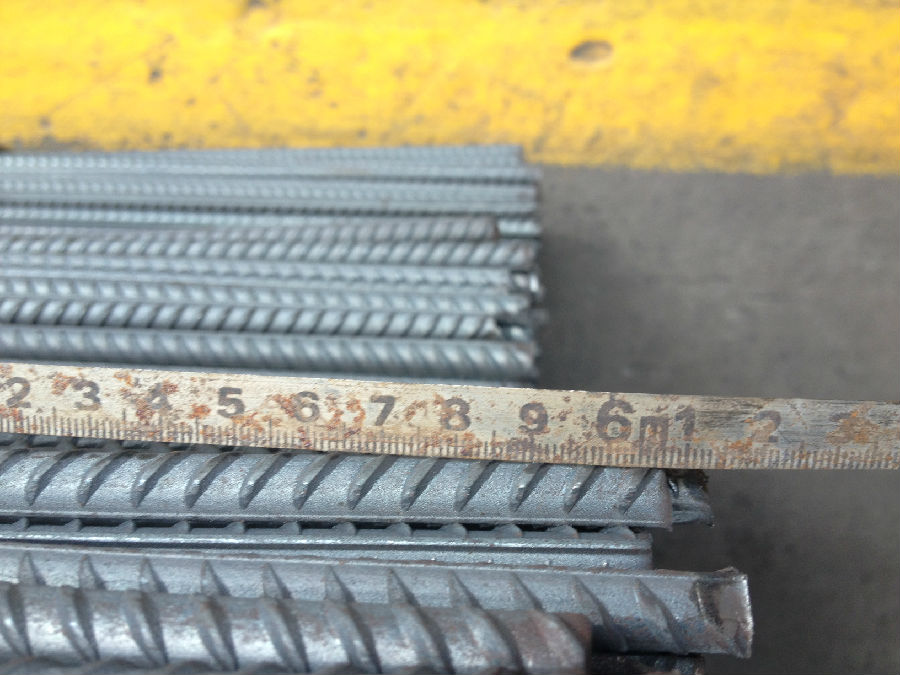
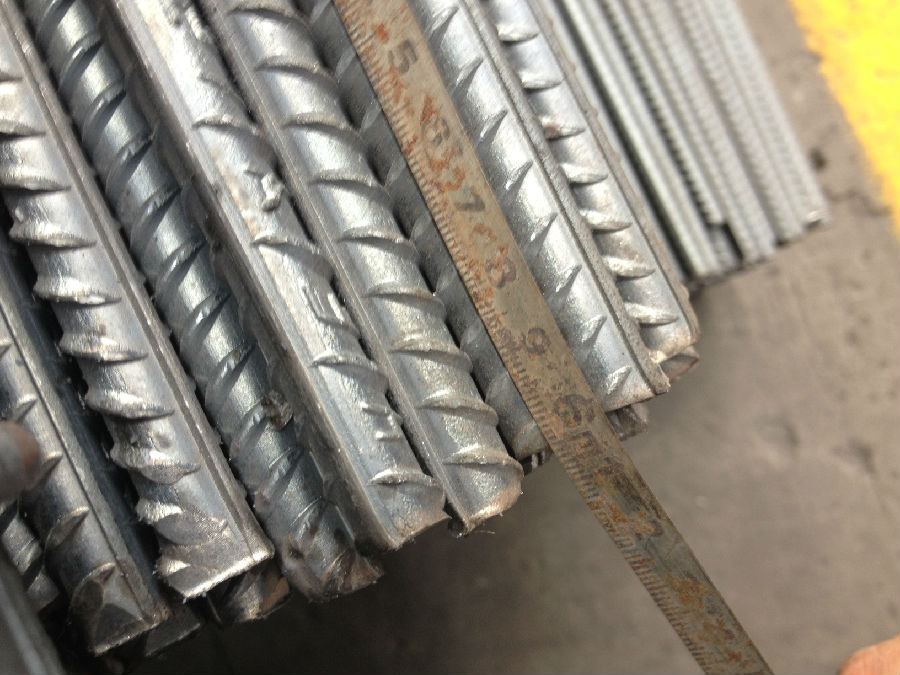
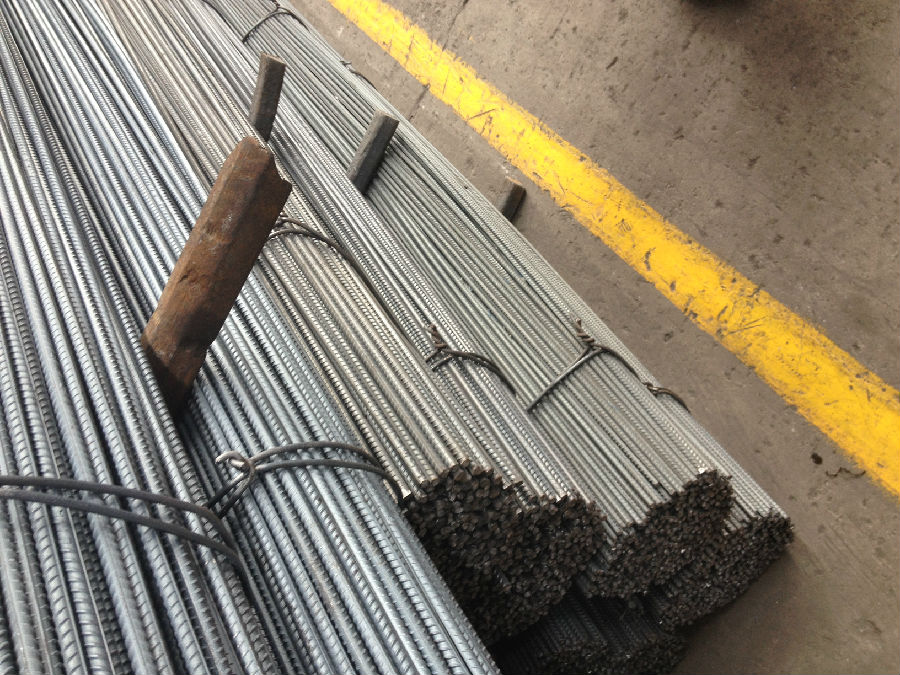
- Q: Are steel rebars suitable for use in historical building restoration?
- Steel rebars can be suitable for use in historical building restoration, but careful consideration should be given to the specific requirements of the project and the significance of the building. Steel rebars offer strength, durability, and ease of installation, which can be advantageous in reinforcing and stabilizing historical structures. However, it is important to ensure that the steel rebars do not compromise the original character and integrity of the building. In some cases, historical buildings may have specific preservation guidelines that prohibit or restrict the use of steel rebars. For instance, if the building is listed as a protected monument, the use of steel rebars may be limited to ensure the preservation of its original materials and construction methods. In such instances, alternative reinforcement materials like timber, stone, or even composite materials may be more appropriate. Additionally, it is crucial to consult with preservation experts, architects, and structural engineers who specialize in historical building restoration. They can provide valuable insights and recommendations on the most suitable reinforcement options for the specific project. Their expertise can help strike a balance between the structural needs of the building and the preservation of its historical value. Ultimately, the suitability of steel rebars for use in historical building restoration depends on a thorough assessment of the building's historical significance, the specific requirements of the restoration project, and adherence to preservation guidelines. With careful planning and consideration, steel rebars can be successfully incorporated into the restoration process, ensuring the longevity and stability of the historical structure while preserving its unique heritage.
- Q: What are the alternatives to steel rebars in construction?
- Some alternative materials to steel rebars in construction include fiber-reinforced polymer (FRP) rebars, basalt rebars, carbon fiber rebars, and glass fiber rebars. These materials offer advantages such as corrosion resistance, lightweight properties, and high tensile strength. They are becoming increasingly popular in construction projects where durability and longevity are important factors.
- Q: How do steel rebars contribute to the overall seismic performance of a building?
- Steel rebars contribute to the overall seismic performance of a building by providing reinforcement and strength to the structure. They help resist the forces generated during an earthquake by increasing the ductility and tensile strength of the concrete. This reinforcement prevents the building from collapsing or suffering severe damage during seismic events, making it more resistant to lateral and vertical movements caused by ground shaking.
- Q: Can steel rebars be used in structures with high resistance to earthquakes?
- Yes, steel rebars can be used in structures with high resistance to earthquakes. Steel rebars are commonly used in reinforced concrete structures to enhance their strength and durability. In earthquake-prone areas, it is crucial to design and construct buildings that can withstand seismic forces. Steel rebars, when properly incorporated into the structural design, can help enhance the overall seismic performance of a building. Steel rebars provide several advantages in earthquake-resistant structures. Firstly, they increase the tensile strength of concrete, which is otherwise weak in tension. This reinforcement helps to prevent cracking and failure of the concrete during seismic events. Additionally, steel rebars can improve the ductility of the structure, allowing it to absorb and dissipate energy during an earthquake. This ductile behavior helps to minimize structural damage and ensures that the building remains stable and safe. Furthermore, steel rebars can be used in conjunction with other seismic design techniques to enhance the overall performance of the structure. For example, they can be combined with special concrete mixes, such as high-strength or fiber-reinforced concrete, to further improve the seismic resistance. Additionally, advanced structural systems like moment frames or shear walls can be integrated with steel rebars to provide even greater earthquake resistance. However, it is important to note that the earthquake resistance of a structure does not solely rely on the use of steel rebars. Proper design, construction techniques, and adherence to seismic building codes are also crucial factors. Engineers must consider various aspects such as the building's location, soil conditions, and expected seismic loads to ensure the structural integrity and safety of the building. In conclusion, steel rebars can be effectively used in structures with high resistance to earthquakes. Their inclusion in reinforced concrete structures enhances the tensile strength and ductility, enabling the building to withstand seismic forces. However, it is essential to implement comprehensive seismic design strategies and adhere to building codes to ensure the overall safety and performance of the structure.
- Q: How are steel rebars measured and labeled?
- Steel rebars are measured and labeled based on their diameter, length, and grade. Diameter is typically measured in millimeters, and rebars are labeled with numbers such as #3, #4, #5, etc., which correspond to their diameter size. Length is measured in feet or meters, and rebars are usually available in standard lengths like 20 feet or 6 meters. Finally, rebars are labeled with their grade, which represents their tensile strength, such as Grade 40, Grade 60, etc. These measurements and labels ensure the proper identification and usage of steel rebars in construction projects.
- Q: How do steel rebars improve the strength of concrete?
- Steel rebars improve the strength of concrete by providing reinforcement and resistance to tension forces. They are embedded within the concrete, forming a strong bond with it, and help to distribute loads and prevent cracks from spreading. The addition of steel rebars enhances the structural integrity and durability of concrete structures, making them more resistant to bending, shearing, and other forms of deformation.
- Q: How do steel rebars affect the overall fire safety of a structure?
- Steel rebars can have both positive and negative effects on the overall fire safety of a structure. On one hand, steel rebars can contribute to the strength and stability of the structure, helping it withstand the impact of a fire and preventing structural collapse. This is especially important in high-rise buildings or structures that are vulnerable to fire hazards. Moreover, steel rebars have a high melting point, making them more resistant to heat compared to other building materials. This can help slow down the spread of fire and provide additional time for evacuation or firefighting measures. However, steel rebars can also have some negative effects on fire safety. When exposed to high temperatures, steel expands, which can lead to structural deformations and potential failure of the rebars. This can compromise the integrity of the structure and increase the risk of collapse. Additionally, steel rebars conduct heat, which means they can transfer heat from the fire to other parts of the structure. This can cause localized heating and weaken nearby materials, potentially leading to a faster spread of fire within the building. To mitigate these negative effects, fire-resistant coatings or fireproofing materials can be applied to the steel rebars. These coatings can provide insulation and protect the rebars from high temperatures, delaying their failure and reducing the risk of structural collapse. In conclusion, while steel rebars can enhance the overall fire safety of a structure by providing strength and stability, they also have some drawbacks. Proper fire protection measures, such as fire-resistant coatings, are crucial to ensure the rebars perform optimally in the event of a fire.
- Q: How do steel rebars improve the structural integrity of a building?
- Steel rebars improve the structural integrity of a building by reinforcing concrete structures, providing additional strength and stability. The rebars act as a skeleton within the concrete, distributing and transferring loads more effectively, preventing cracks and reducing the risk of collapse.
- Q: Can steel rebars be used in parking garage construction?
- Yes, steel rebars can be used in parking garage construction. Steel rebars are commonly used in reinforced concrete structures, including parking garages, to provide additional strength and durability. Rebars help to distribute the load and enhance the structural integrity of the concrete, making it capable of withstanding heavy loads, such as those encountered in parking garages. The use of steel rebars in parking garage construction is essential for ensuring the longevity and safety of the structure.
- Q: How are steel rebars installed in concrete?
- Steel rebars are installed in concrete by first placing them in the desired position and securing them with rebar supports or chairs. Then, the rebars are tied together using wire or rebar ties to ensure they are properly fixed and spaced apart. Finally, the concrete is poured over the rebars, covering them completely and providing structural reinforcement to the concrete.
Send your message to us
Steel Rebar, Deformed Steel Bar, Iron Rods for Construction or Concrete
- Loading Port:
- Tianjin
- Payment Terms:
- TT OR LC
- Min Order Qty:
- 24 m.t.
- Supply Capability:
- 23000 m.t./month
OKorder Service Pledge
OKorder Financial Service
Similar products
Hot products
Hot Searches
Related keywords
